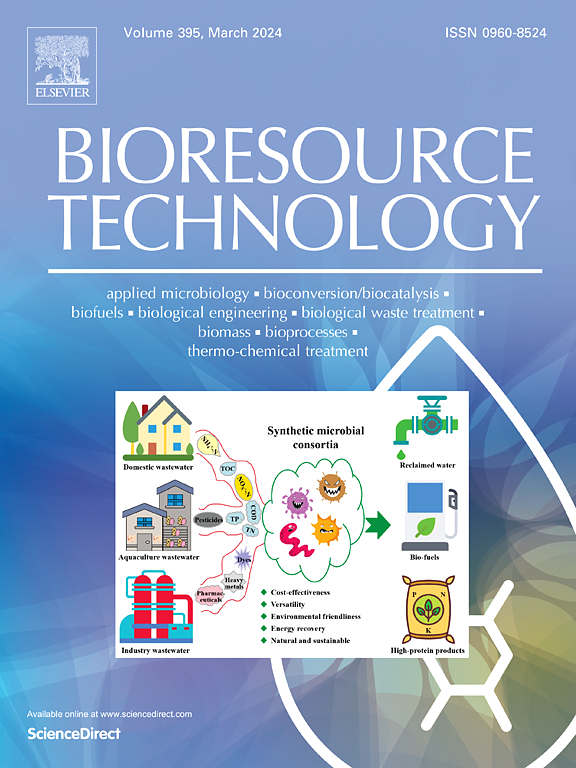Metabolic reprogramming and machine learning-guided cofactor engineering to boost nicotinamide mononucleotide production in Escherichia coli
IF 9.7
1区 环境科学与生态学
Q1 AGRICULTURAL ENGINEERING
引用次数: 0
Abstract
Nicotinamide mononucleotide (NMN) is a bioactive compound in NAD(P)+ metabolism, which exhibits diverse pharmaceutical interests. However, enhancing NMN biosynthesis faces the challange of competing with cell growth and disturbing intracellular redox homeostasis. Herein, we boosted NMN production in Escherichia coli by reprogramming central carbon metabolism with a machine learning (ML)-guided cofactor engineering strategy. Engnieering NMN biosynthesis-related pathway directed carbon flux toward NMN with the NADPH level increased by 73 %, which, although enhanced NMN titer (2.45 g/L), impaired cell growth. A quorum sensing (QS)-controlled cofactor engineering system was thus contructed and optimized by ML models to address redox imbalance, which led to 3.04 g/L NMN with improved cell growth. The final strain S344 produced 20.13 g/L NMN in fed-batch fermentation. This study showed that perturbation on cofactor level is a crucial limiting factor for NMN biosynthesis, and proposed a novel ML-guided strategy to manipulate intracellular redox state for efficient NMN production.

求助全文
约1分钟内获得全文
求助全文
来源期刊

Bioresource Technology
工程技术-能源与燃料
CiteScore
20.80
自引率
19.30%
发文量
2013
审稿时长
12 days
期刊介绍:
Bioresource Technology publishes original articles, review articles, case studies, and short communications covering the fundamentals, applications, and management of bioresource technology. The journal seeks to advance and disseminate knowledge across various areas related to biomass, biological waste treatment, bioenergy, biotransformations, bioresource systems analysis, and associated conversion or production technologies.
Topics include:
• Biofuels: liquid and gaseous biofuels production, modeling and economics
• Bioprocesses and bioproducts: biocatalysis and fermentations
• Biomass and feedstocks utilization: bioconversion of agro-industrial residues
• Environmental protection: biological waste treatment
• Thermochemical conversion of biomass: combustion, pyrolysis, gasification, catalysis.
 求助内容:
求助内容: 应助结果提醒方式:
应助结果提醒方式:


